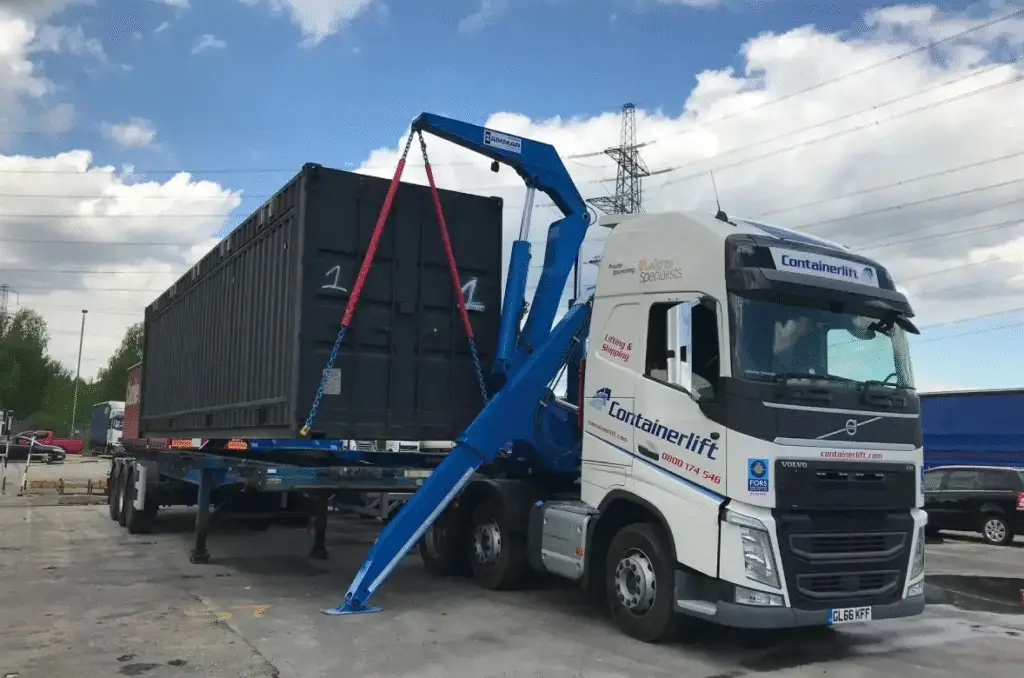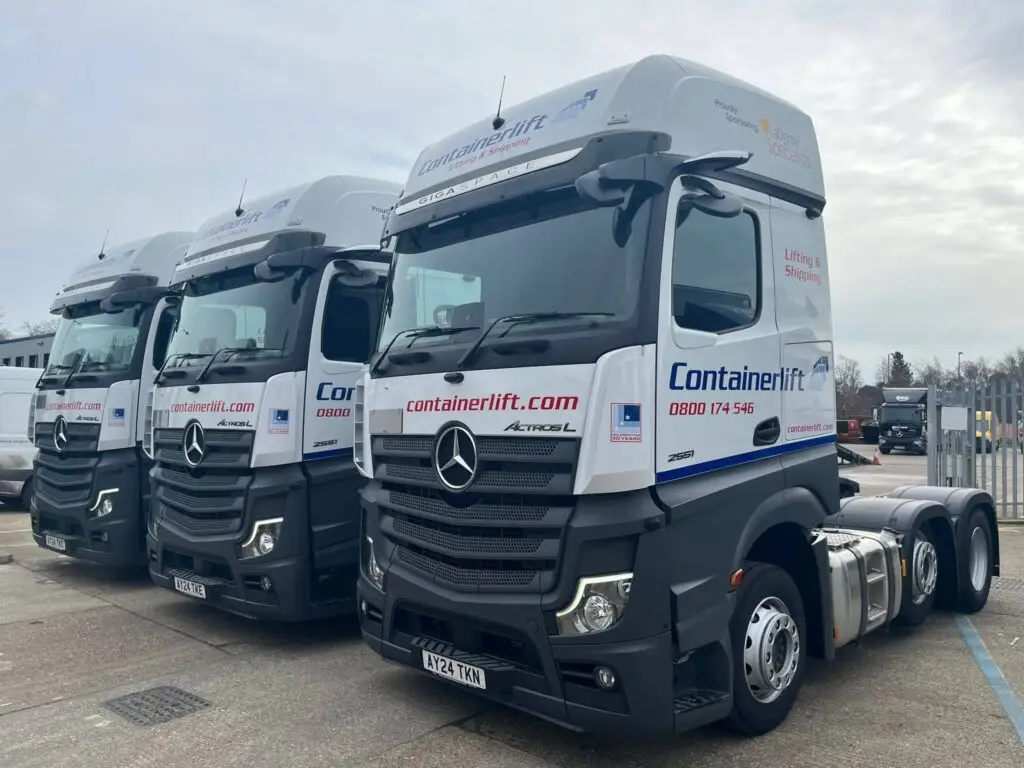10 Advantages of Shipping Container Haulage in the UK:
Have you ever wondered why shipping containers are still the go-to solution in haulage — and what real advantages they deliver in the UK logistics market?
Shipping containers serve as the backbone of global trade, facilitating the shipment, storage, and handling of a diverse range of goods. While there are various methods for transporting goods both nationally and internationally, shipping containers remain the predominant choice for haulage. In this comprehensive guide, we’ll delve into the myriad benefits of using shipping containers for your haulage needs.
Where logistical efficiency, cost control and flexibility can make or break a supply-chain, the humble shipping container continues to punch well above its weight. For UK based companies — whether moving bulk goods, switching between road, rail and sea, or operating in multimodal environments — containerised haulage offers a compelling toolkit of benefits. As your web and content partner you’ll appreciate how the underlying forces of standardisation, sustainability, security and cost-control combine to deliver real business value. This updated guide revisits the top 10 advantages of utilising shipping containers for haulage, reflects on how the UK market has evolved (post-Brexit, supply-chain pressure, sustainability targets) and highlights why now (2025) is still an excellent time to lean into containerised logistics. Whether you’re a shipper, a freight-forwarder, or a company simply exploring better transport options, you’ll find actionable insight here. So, let’s dive in and unpack how shipping containers provide more than just a box on a trailer — they can be a strategic asset.
Why Opt for Shipping Containers for Your Haulage Requirements?
1. Standardisation – Streamlining Global and Domestic Logistics
One of the most powerful advantages of shipping containers is the level of standardisation: globally recognised sizes (20ft, 40ft, etc.), uniform ISO code standards, and a consistent identification system. This means that the same container can seamlessly move from sea to rail to road without repacking, re-handling or incompatibility. For UK haulage operations, this standardisation reduces handling time, minimises damage risk and aligns with ports and terminals that expect ISO-container dimension compliance.
In effect, standardisation underpins every other advantage on this list.
2. Versatility in Content Handling – A One-Size-Fits-All Solution
Shipping containers provide remarkable versatility. Whether it’s general cargo, palletised goods, high-value items, vehicles, or even hazardous materials (with suitable modifications), containers can be customised (partitions, shelving, ventilation) to match the cargo profile. In the UK haulage context, you might shift from domestic road movements to export via short-sea shipping — the same container can remain in play. Customisation without sacrificing standard size is a major plus.
3. Multi-Modal Transport Flexibility – Road, Sea, Rail and Intermodal
Modern logistics thrives on being able to move goods smoothly across different modes of transport. Shipping containers excel in this area: loaded at origin, transported by road, transferred to rail or sea, landed, and onward transported by road, all without shifting the actual contents. For UK operators integrating with European rail or sea links, this flexibility is a game-changer. Containerised systems minimise transhipment waste, improve reliability and support just-in-time operations.
4. Cost-Effectiveness – Maximising Economies of Scale
Thanks to standardisation and high utilisation rates, shipping containers deliver cost-effectiveness. They reduce the need for packing/unpacking, lower damage rates (thus insurance costs), and by moving full container loads (FCL) rather than break-bulk, you gain economies of scale. In the UK haulage world where margins are tight, using container transport can help control cost per ton-mile. Leasing or renting containers further lowers upfront investment and allows flexible scaling.
5. Time-Efficiency – Speeding Up the Supply Chain
Time is money in logistics. Shipping containers help speed things up by simplifying loading/unloading, enabling faster turnaround at ports and terminals, reducing the number of handling stages and coordinating multi-modal transfers. For UK shipments that integrate with European schedules or short-sea services, expedited container flows can make a real difference. Better visibility, fewer delays and the ability to plan around container slots all contribute.
6. Easy Manoeuvrability – Navigating UK Complex Terrains
While “container” might conjure large ocean‐going imagery, containers are highly manoeuvrable when structured correctly: they stack, fit on trailers, can be picked and placed easily, and operate efficiently in congested UK hubs or tight logistic zones. For UK haulage firms managing city deliveries, warehousing constraints or mixed modal pick-up/drop-off, containerised assets can be routed and handled more flexibly than many bespoke alternatives.
7. Enhanced Security – Safeguarding Your Valuables
Security is vital when freight moves across multiple hands. Shipping containers are built of durable steel, offer strong locking mechanisms, and can be fitted with tracking devices and sensors. For high-value UK cargo, sensitive international loads or goods subject to regulatory oversight (customs, tax-duty), the container acts as both physical and administrative secure envelope. Reduced pilferage, fewer damage incidents, and easier chain-of-custody all contribute.
8. Storage & Warehousing – More Than Just Transport
One of the often-overlooked advantages is that shipping containers double as storage units. In the UK haulage business they can serve as interim storage at depots, be used for staging cargo before transport, or be placed on-site for overflow. The durability of containers means goods are protected from environment (rain, wind, pests) and the interior space (for example a standard 20-ft container delivers around 1,360 cubic feet) can accommodate sizeable volume without need for bespoke warehousing. This flexibility reduces overheads and frees up resources.
9. Environmental Sustainability – A Greener Choice
Today, sustainability is not optional. Shipping containers contribute to lower carbon footprints by reducing the number of re-handling operations, enabling more efficient multi-modal transfers (which often favour rail or sea over road), and through reuse over many trips. For UK firms looking to hit ESG targets or simply project a green logistics image, container transport offers a credible story. Additionally, many operators now track the carbon intensity of their container loads — aligning with industry trends.
10. Reusability & Lifecycle Value – A Sustainable and Economical Option
Unlike single-use packaging or ad-hoc crates, shipping containers are designed for multiple reuse cycles. At end-life they can be recycled or repurposed (into storage units, offices, pop-ups etc). For UK haulage companies, this means a container investment is not just a transport asset but a long-term resource. The lifecycle value – reducing waste, lowering capital cost per use – adds financial and environmental appeal.
UK-Focus: Container Haulage Services & Trends
If you’re operating in the UK and exploring container haulage, the benefits above are magnified by a few local trends. Post-Brexit regulatory shifts mean that integrated container flows via UK ports, short-sea routes and rail hubs are increasingly pivotal. The drive towards net-zero logistics means customers and carriers alike are prioritising greener transport modes — containerisation supports that shift. Meanwhile, advances in digital tracking, telematics and freight-platforms mean container visibility and utilisation is higher than ever.
At Containerlift Services Ltd we operate across the UK offering container deliveries, self-loading side-loader services, rentals and sales. Our fleet is optimised for container haulage, offering secure, flexible and scalable options tailored to your requirements. Whether you’re looking for one-off haulage, long-term contracts or value-added services (such as on-site container storage or modified containers), the container model remains exceptionally practical.

Fresh Insight: What’s Changed Since 2023?
Supply-chain resilience: Recent years have exposed weaknesses in non-containerised flows; containers now benefit from tighter planning and fewer transfers.
Digital & IoT: More containers are fitted with sensors, GPS & real-time tracking — boosting security and utilisation efficiency.
Sustainability pressure: With stricter UK & EU rules on carbon reporting and transport emissions, containerised logistics is increasingly seen as a compliance-friendly strategy.
Short-sea & rail revival: Container flows via short-sea UK-Europe and domestic rail corridors are gaining ground, making container haulage even more appealing domestically.
Container modifications + value-added services: Using containers not just as transport units but as mobile storage, site offices or modular units during transitional projects (construction, events) is growing.

Case Study: How Company X Transformed Their UK Haulage Operation with Containers
Background: Company X (a mid-sized UK manufacturer of furniture) faced rising logistics costs and frequent damage to goods shipped domestically and to Europe. Their previous model relied on loose crates and palletised goods moved through multiple terminals.
Solution: They switched to full-container loads (FCL) using 20-ft and 40-ft ISO shipping containers for both UK domestic road haulage and export to the EU. They partnered with Containerlift to leverage side-loader deliveries, on-site container staging and integrated storage.
Results:
Damage reduction: The reinforced structure and fewer handling transfers reduced product damage claims by 35 %.
Cost savings: With fewer intermediate handling points and higher utilisation of container space, transport cost per unit dropped by 18 %.
Time savings: Transit times improved by an average of 12 % thanks to smoother modal transfers and fewer delays.
Sustainability benefit: They were able to report a 9 % reduction in CO₂ per ton transported over 12 months, thanks to increased use of rail and sea legs and higher load factors.
Secondary use: Old containers were repurposed as on-site storage near their UK manufacturing site, saving on external warehousing costs.
“A shipping container isn’t just a box – it’s a logistics platform, a storage vault and a sustainability lever rolled into one.”
Takeaway: By switching to containerised haulage, Company X turned a transport headache into a strategic asset — improving cost, time, damage and sustainability metrics.
Ready to leverage the full advantages of shipping containers for your haulage needs? Contact Containerlift today to explore container transport services tailored to your operation.
Container Haulage Services in the UK
If you’re in search of reliable and cost-effective shipping container transport services in the UK, shipping containers offer a plethora of advantages. They are not only robust and secure but can also be tailored to meet your specific requirements.
For more information on our container haulage services, don’t hesitate to get in touch with our experienced team today at +44 (0)1371 879400.
https://www.containerlift.co.uk/shipping-container-design-the-legacy-and-the-future/




